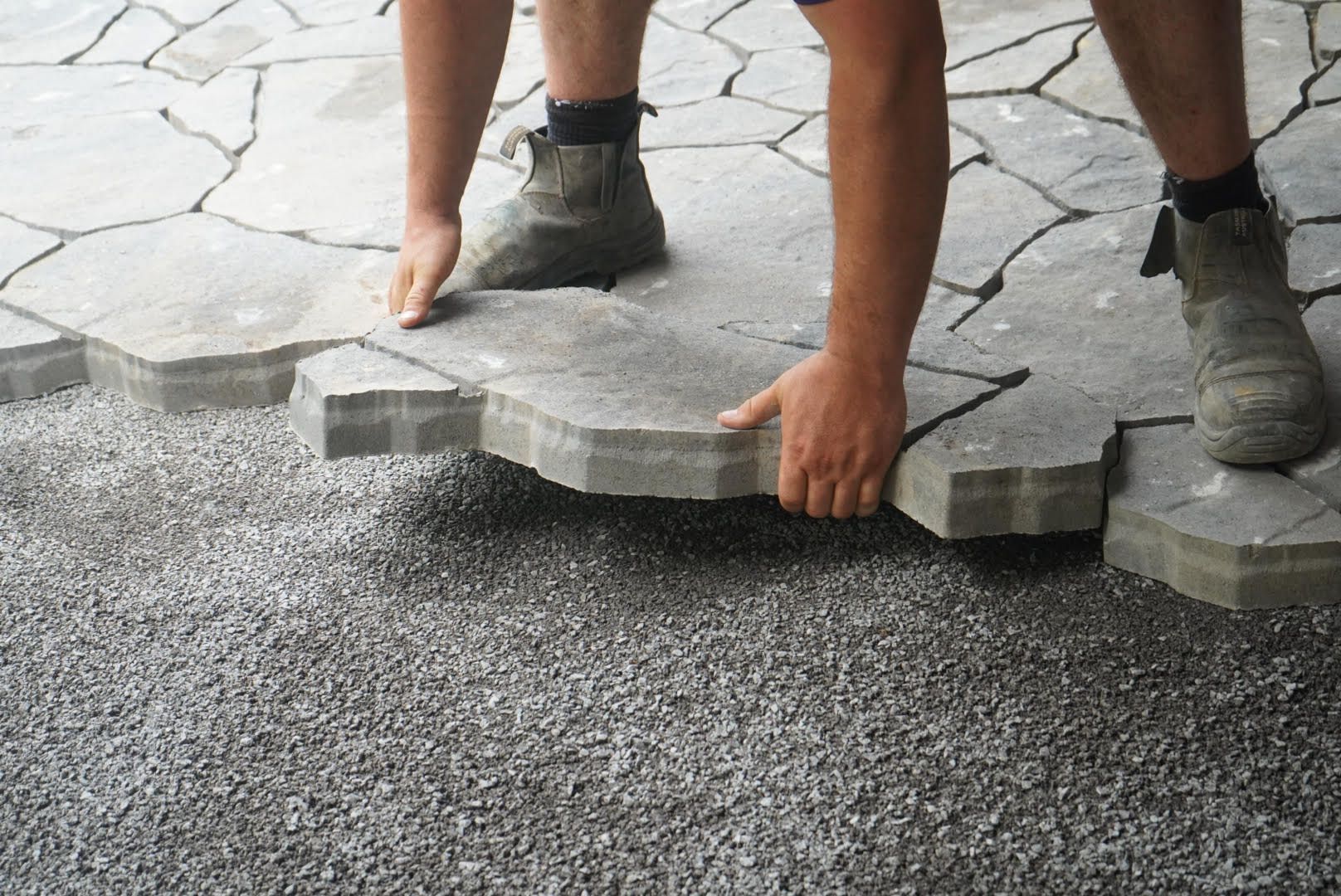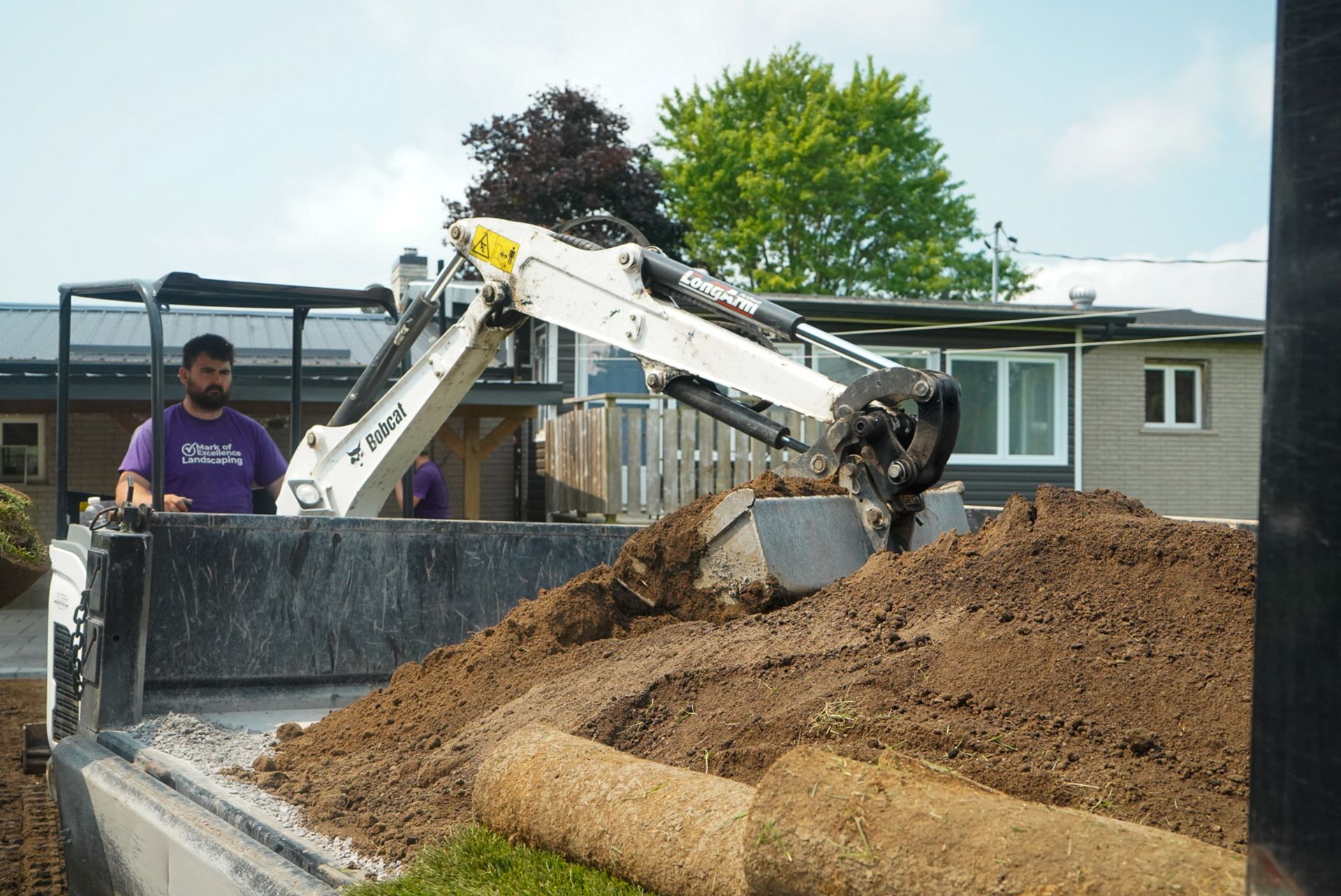The Complete Guide to Retaining Walls in Kingston: Purpose, Design, Cost & Care
Retaining walls do far more than “hold back dirt.” When they’re engineered and built correctly, they control erosion, create level spaces for patios and parking, and bring structure and visual definition to your outdoor design. In Kingston and surrounding areas, where freeze– thaw cycles and limestone terrain can shift the ground dramatically, a properly constructed retaining wall protects your property for decades instead of just a few seasons.
Why Retaining Walls Matter
A well-planned retaining wall can completely change how you use your property.
- Stabilise slopes and prevent erosion. If your yard pitches toward a driveway or foundation, a wall reshapes grades and keeps soil where it belongs.
- Create functional outdoor spaces. Terracing turns steep yards into usable gardens, patios, or play areas.
- Add safety and style. Integrated steps and lighting make access safer while adding depth and texture to your landscape.
Want to see how this looks in practice? Explore our recent landscape projects to see retaining walls, patios, and steps designed specifically for Kingston properties.
Choosing the Right Materials
Different materials suit different design goals and budgets:
- Interlock block systems - engineered for strength and consistency, great for curves and taller walls.
- Armour stone or natural limestone - ideal for bold, timeless designs that match Kingston’s natural look.
- Poured concrete - durable and sleek, often chosen for contemporary homes.
- Timber - economical for small garden walls, though less durable in wet soil.
No matter which face material you choose, the unseen components - a compacted base, clear-stone drainage, and proper backfill — determine how long the wall lasts.
Choosing the Right Materials
Water is the most common cause of retaining wall failure. When it gets trapped behind the wall, hydrostatic pressure builds and pushes materials out of alignment- especially during freeze-thaw cycles. Best practice is to include drainage stone, a geotextile fabric, and a perforated pipe that outlets safely away from the structure.
Kingston’s frost depth can exceed 1.2 m (about four feet), according to Utilities Kingston. That’s why proper excavation, base depth, and drainage are essential- they prevent frost heave and movement that could damage your investment.
If you’d like to see how we incorporate these climate-specific details into every build, visit our
services page to learn more about our excavation, grading, and hardscaping process.
Permits and Local Requirements
In Kingston, retaining walls that are attached to a building or retain more than 1.0 m of earth require compliance with the Ontario Building Code. You can confirm current regulations on the City of Kingston Building Permits page. Walls exceeding that height often need engineered drawings and an approved drainage plan before construction begins.
When we design your project, our team ensures it aligns with both municipal standards and the
Site Plan Control Guidelines
to keep your installation compliant and worry-free.
Why Retaining Walls Fail- and How We Prevent It
- Poor drainage – no clear stone or outlet for water to escape.
- Weak base preparation – thin or uncompact aggregate undercuts stability.
- Improper backfill – native clay holds water against the wall.
- Under-designed structure – taller walls need engineered reinforcement.
At
Mark of Excellence Landscaping, we prevent these issues through proper excavation, dense-graded base layers, clear-stone backfill, geotextile separation, and, where necessary, soil reinforcement. It’s the kind of foundation work that keeps your wall straight and strong through Kingston winters.
Understanding Cost
Every property is different, but these factors influence pricing:
- Height and length – taller walls require more material and labour.
- Access – limited access often means smaller equipment and more time.
- Material selection – armour stone, interlock, or poured concrete each have different costs and lead times.
- Design complexity – steps, curves, and multi-tier systems add precision work.
- Drainage design – outlets and swales protect the wall and nearby features.
Small garden walls can start in the low thousands, while larger engineered systems can reach five figures depending on conditions. A short on-site consultation allows us to provide an accurate, transparent quote.
The Proper Build Sequence
- Excavate to undisturbed subgrade wide enough for the base and embedment.
- Install the base with compacted aggregate in thin, even lifts.
- Lay drainage pipe that outlets to daylight and surround it with clear stone.
- Build the wall in stepped courses, checking line and level frequently.
- Backfill and compact behind each course using free-draining stone.
- Finish grade and cap to direct surface water away from the wall.
For larger designs, we often coordinate base work through our
excavation services so drainage, grading, and hardscaping all tie together.
Maintenance Tips for Longevity
- Inspect seasonally. Keep weep holes clear and remove debris at the base.
- Control surface drainage. Ensure water flows away from the wall and not toward it.
- Protect during winter. Avoid piling snow or using harsh de-icing salts on stone faces.
- Touch up joints and caps. Small maintenance now prevents major repairs later.
These simple steps extend your wall’s lifespan and protect your investment for years to come.
Common Questions About Retaining Walls
- Who can build retaining walls in Kingston?
Look for certified hardscape contractors with local references, engineered methods, and a photo portfolio. Our team at Mark of Excellence Landscaping designs and builds retaining walls tailored to Kingston’s terrain and climate.
- Where are retaining walls used?
They’re common along driveways, patios, and sloped yards to create level terraces for gardens or outdoor living. You’ll also see them near walkouts, property lines with grade changes, and waterfront lots.
- How long do retaining walls last?
With proper base prep and drainage, interlock or stone walls often last decades. Lifespan depends on materials, soil conditions, and routine maintenance like keeping outlets clear and managing surface runoff.
- Can retaining walls be repaired?
Yes. Leaning sections, bulges, or loose caps can often be rebuilt with corrected base and drainage. Severely failed or load-bearing walls may require partial replacement or engineered reinforcement.
- Are retaining walls covered by insurance?
Most policies treat retaining walls as “other structures” with limited coverage. Damage from gradual settling or water pressure is often excluded, so it’s best to review your policy and ask your broker.
- Are retaining walls necessary?
They’re essential when erosion, slope, or limited space prevents safe use of your yard. A wall stabilises soil, improves drainage, and creates usable, level areas for patios, play spaces, and parking.
- Are retaining walls hard to build?
Small decorative walls can be DIY, but anything tall, curved, or near structures requires professional base prep, compaction, and drainage. Hiring a pro prevents costly rework after freeze–thaw seasons.
- Are retaining walls expensive to build?
They can be, because costs include excavation, engineered base, drainage, and precise installation. Investing in correct construction saves money over time by avoiding premature failure and repairs.
- Are retaining walls worth it?
Yes. A well-built wall adds usable space, protects adjacent features, improves drainage, and boosts curb appeal and property value- especially on Kingston’s sloped or waterfront lots.
Start Your Retaining Wall Project
If your yard is sloped, eroding, or simply ready for an upgrade, a retaining wall can redefine your outdoor space. Our certified hardscape team builds walls that stand up to Kingston’s climate- and look incredible doing it.
Ready to get started? Use our quick
Request a Quote form to tell us about your project, and we’ll be in touch to schedule a consultation.




